Almost 800 years lie between his death and my birth, and yet I claim Dominic de Guzman as my teacher.
Such is the influence of this Spaniard, born in rural Calaruega, near the Benedictine abbey of Santo Domingo de Silos in 1169.
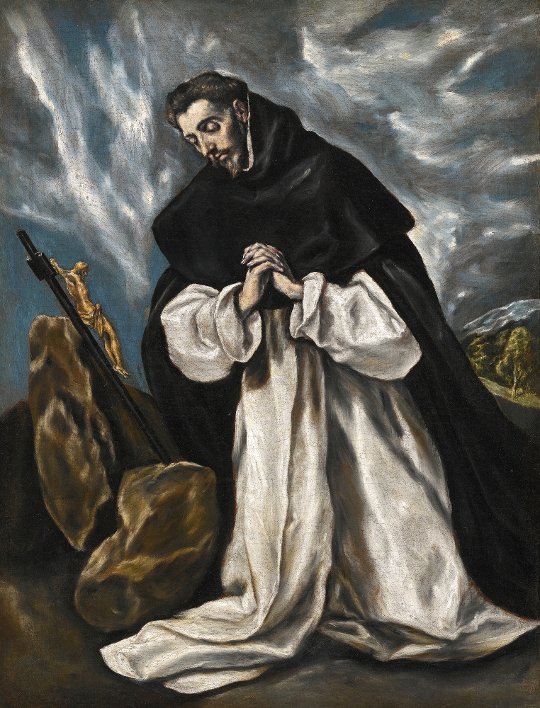
Educated in Palencia, a legend emerges about Dominic in 1191, during a famine. Young Dominic gave away his money and sold his clothes, furniture and precious manuscripts to feed his hungry neighbors; he reportedly told astonished fellow students, “Would you have me study off these dead skins, when men are dying of hunger?”
His parents, Juana and Felix, were “honored and wealthy," and some say they came from a minor branch of the great noble family, de Guzman. Dominic’s mother, Juana of Aza, was beatified by Pope Leo XII in 1828. In any event, the story is told that before his birth, Juana made a pilgrimage to the Abbey and there dreamt that a dog leapt from her womb carrying a torch in its mouth, and “seemed to set the earth on fire”.1
Meeting the Cathars
In 1194, around age twenty-five, Dominic joined the Augustinian Canons Regular. Ten years later he accompanied the Bishop on a diplomatic mission to Denmark. The envoys traveled via Aragon and the south of France. There, they encountered the Cathars, a heretical religious sect with gnostic and dualistic beliefs that was spreading throughout southern France. This was to prove to be a singularly auspicious meeting for the Church.
The Cathars bore some resemblance to modern cults in that they stressed vegetarianism and "pure" living. Strongly elitist in nature, their followers aspired to be "illuminati"– that is, considered to have privileged access to higher spiritual truths. They spurned sexuality and family life, purporting to focus on invisible "spiritual goods" alone. They called themselves "Pure Ones" after their Goddess known as the Pure One, the "Virgin Great Creator Mother Mari."
Birth of the Dominicans
The Cathars’ baleful influence was especially felt in the emergent cities of the era, and Dominic responded with a new concept for a religious order which would combine dedication and systematic education, with more organizational flexibility than either the monastic orders or the secular clergy of the time.
He also subjected himself and his companions to the monastic rules of prayer and penance and the local bishop Foulques gave them written authority to preach throughout the territory of Toulouse. In 1215, Dominic established himself, with six followers, in a house there. By January 1217, they had gained papal approval for “The Order of Preachers” (“Ordo Praedicatorum”, or “O.P.,” popularly known as the Dominican Order).
Dominic "the Inquisitor"
Despite the fact that Dominic died in 1221, ten years before the office of the Inquisition was established in 1231, "Dominic the Inquisitor" became one of the most famous figures in the infamous "Black Legend" about Spain.
Historians now agree that 16th- and 17th-century Protestant polemicists created and perpetuated the legend of Dominic the Inquisitor. This image gave German Protestant critics of the Catholic Church an argument against the Dominican Order whose preaching had proven to be a formidable opponent in the lands of the Reformation.
According to his biographer Guiraud, the real Dominic lived an austere life, “observed stated fasts and periods of silence," ”selected the worst accommodations and the meanest clothes," and “never allowed himself the luxury of a bed."
“When travelling, he beguiled the journey with spiritual instruction and prayers” and “as soon as Dominic passed the limits of towns and villages, he took off his shoes, and, however sharp the stones or thorns, he trudged on his way barefooted” and that “rain and other discomforts elicited from his lips nothing but praises to God."
The Hounds of God in Christianity’s Third Millennium
Perhaps it should come as no surprise to anyone that it is the Dominicans – friars, active sisters and nuns – who are leading the way into Christianity’s Third Millennium. In stark contrast to their modernist counterparts, vocations to the orthodox Dominican communities are up all over the world — led by North and South America — as young men and women answer the call to be teachers, preachers and prayers. As someone who studied in the Dominicans’ classrooms decades ago, I can say that the world is very fortunate in this regard.
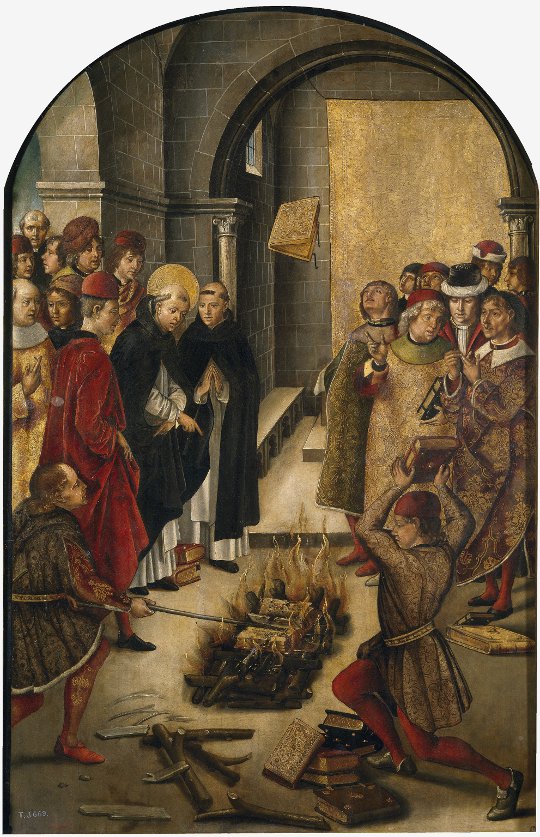
FAMOUS DISPUTATION OF SAINT DOMINICAND THE CATHARS: Books of both were thrown on a fire; Dominic’s books were miraculously preserved from the flames. (Pedro Berruguete)
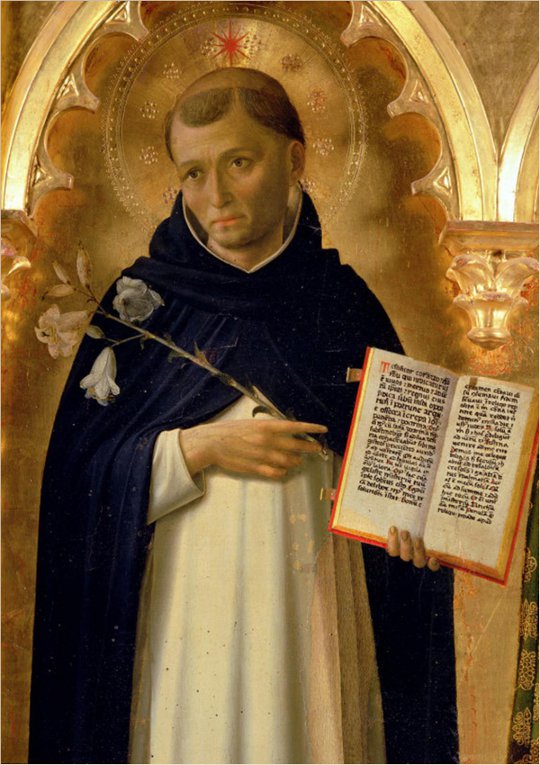
SAINT DOMINIC WAS “…thin and of middle height. His face was handsome and somewhat fair. He had reddish hair and beard and beautiful eyes. …His hands were long and fine and his voice pleasingly resonant. He never got bald, though he wore the full tonsure, which was mingled with a few grey hairs.” Blessed Cecilia Caesarini, Dominican nun.
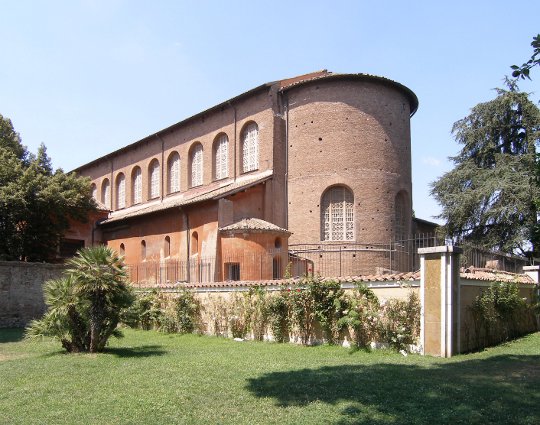
IN 1219, POPE HONORIUS III GAVE THE DOMINICANS THE ANCIENT ROMAN BASILICA OF SANTA SABINA for their studium conventuale, the forerunner of their studium generale at Santa Maria sopra Minerva. Three hundred years later, this became the College of Saint Thomas. In the 20th century it was renamed the Pontifical University of Saint Thomas Aquinas, the famous ‘Angelicum’. PHOTO CREDIT: Dnalor 01 via Wikimedia Commons
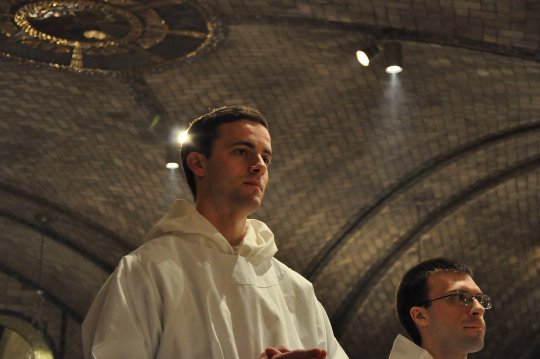
AN INTELLECTUAL HERITAGE: The Order of Preachers is famed for its intellectual tradition, having produced many leading theologians and philosophers, the most famous of which was St. Thomas Aquinas.
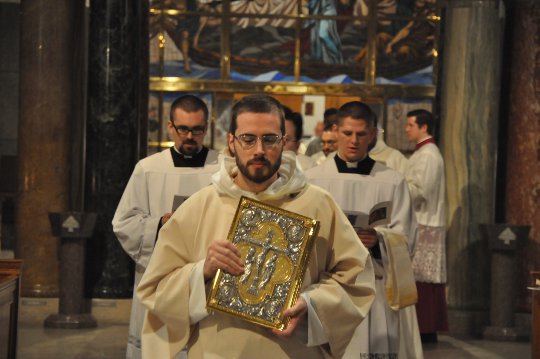
FOUNDED TO PREACH THE GOSPEL AND TO COMBAT HERESY, the Dominicans’ teaching and scholastic organization placed the Preachers in the forefront of the intellectual life of the High Middle Ages.
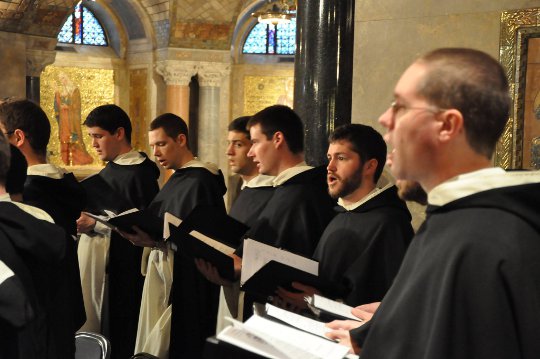
BLACK FRIARS: In English-speaking countries the Dominican friars are often referred to as "Black Friars" because of the black cappa or cloak over their white habits.
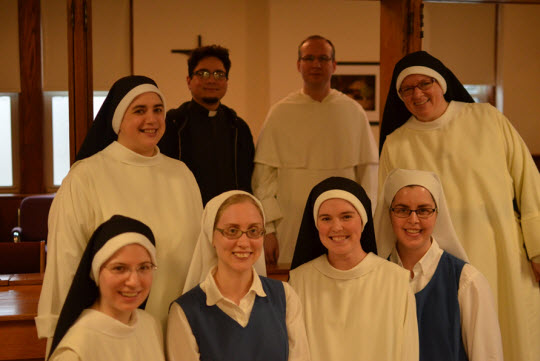
THE DOMINICAN ORDER includes friars, nuns, active sisters, and lay or secular Dominicans. (Photo courtesy of the Dominican Nuns of Summit, NJ)
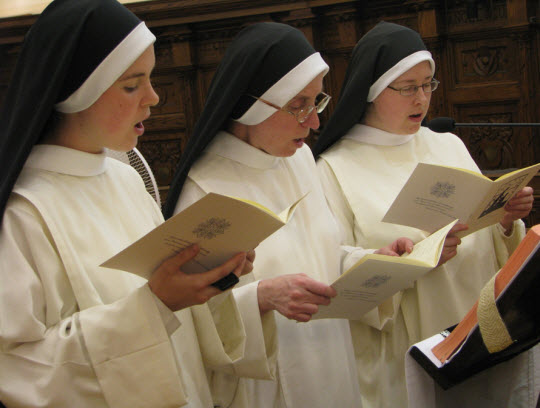
THE FIRST DOMINICAN NUNS were young women who had been disowned by their Cathar families. They were established by St. Dominic in the south of France. (Photo courtesy of the Dominican Nuns of Summit, NJ)
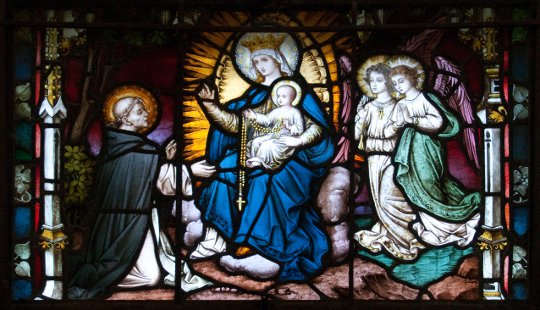
THE LEGEND OF THE ROSARY: Given to Dominic by Our Lady, the spread of the Rosary, a Marian devotion, is attributed to the preaching of St. Dominic.
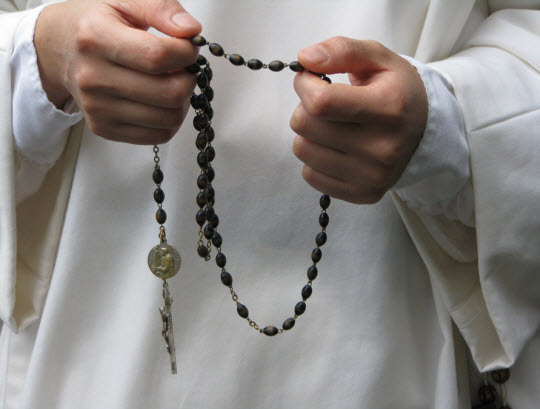
“THE ROSARY OF MARY IS THE PRINCIPLE AND FOUNDATION on which the very Order of Saint Dominic rests for making perfect the life of its members and obtaining the salvation of others.” Pope Pius XI (Photo courtesy of the Dominican Nuns of Summit, NJ)
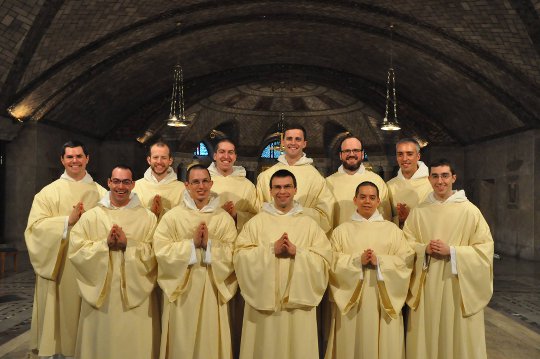
ACCELERATING VOCATIONS: Worldwide, the Order of Preachers has seen a 15% jump in vocations in the last decade, fueled by orthodox leaders as the USA’s burgeoning Eastern Province.
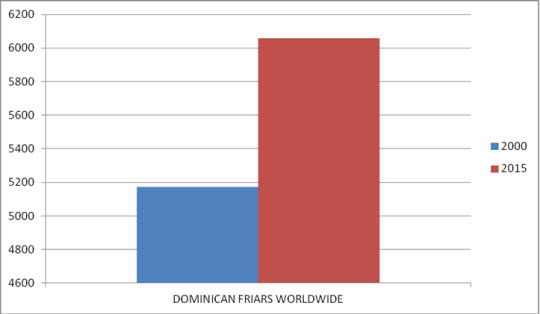
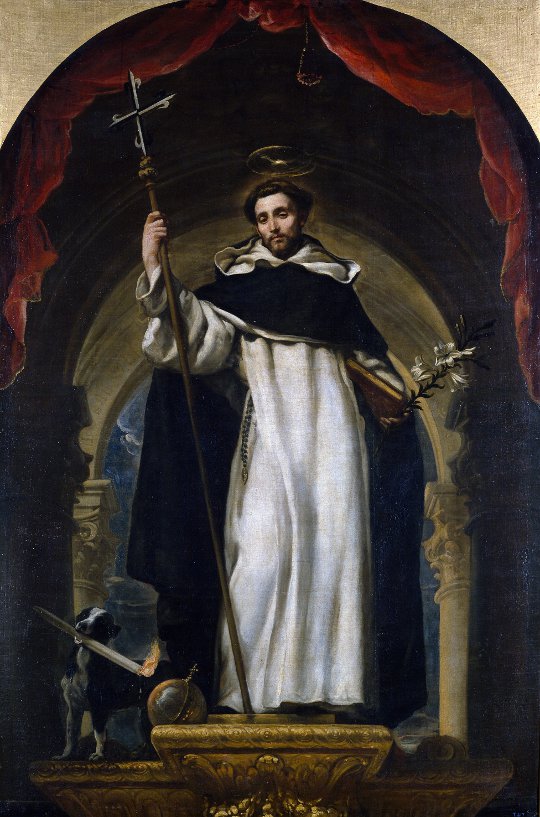
DEATH OF ‘GOD’S HOUND’: Dominic died at the age of fifty-one, “exhausted with the austerities and labours of his career” Arriving at Bologna, Italy, “weary and sick with a fever” Dominic “made the monks lay him on some sacking stretched upon the ground” and that “the brief time that remained to him was spent in exhorting his followers to have charity, to guard their humility, and to make their treasure out of poverty”. He died at noon on 6 August 1221.

____________
1. Their identification as Dominicans gave rise to the pun that they were the Domini canes, or Hounds of the Lord.
Beverly de Soto is Editor of Regina Magazine.
This article appeared originally inRegina Magazineand is reprinted with permission. All rights reserved.
